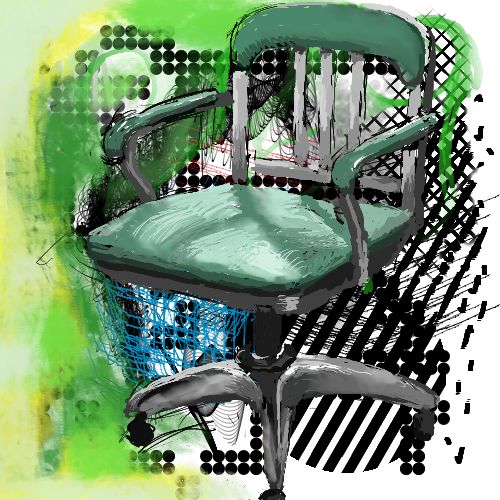
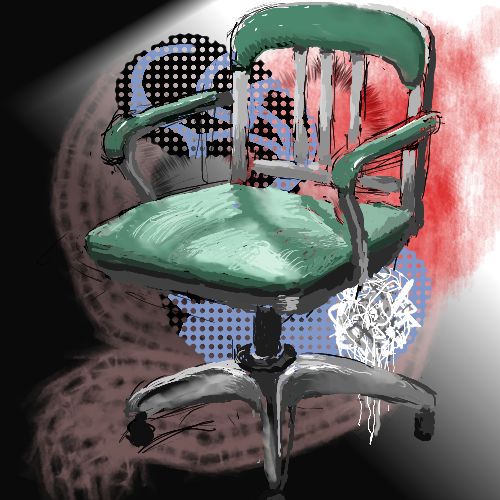
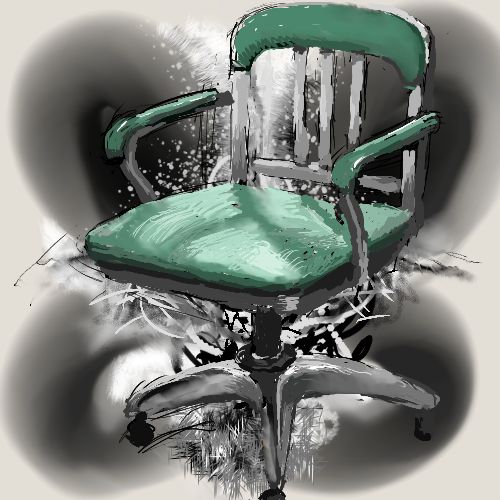
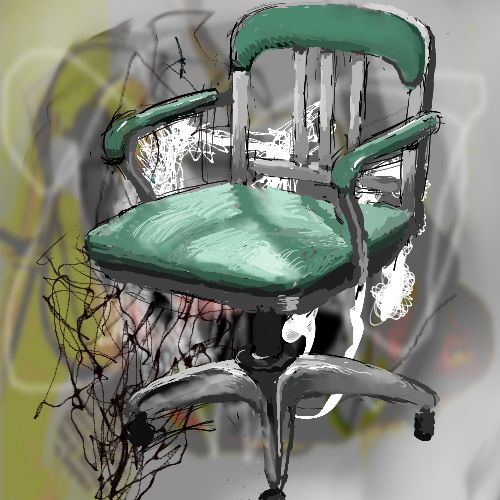
Drawn with Krita, a Linux paint program.
A few brief words about adblockingmageddon below but first, note use of "tap" instead of "click" in this screenshot (and since we said adblockingmageddon we can't really complain about the horrible word "embiggen").
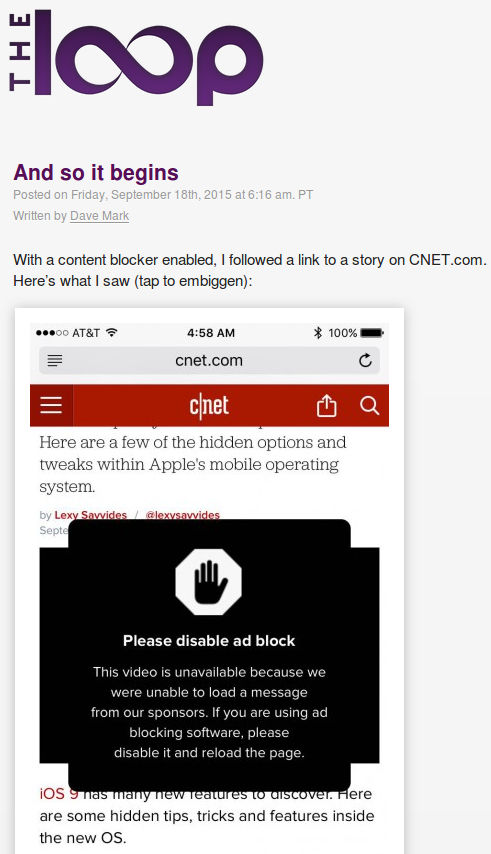
Have been wondering when "tap" would replace "click" as a metaphor (one-tap install, tap-through, tapbait, etc).
In the flare-up over the new iPhone OS's venturesome enabling of ad-blockers, Lauren Weinstein refers to an "inflection point":
Apple's new iOS 9 ad blocking push threatens to be the inflection point that transforms ad blocking from a relatively niche application class to much more of a default situation.
What about the inflection point that pushes vocabulary from click to tap? A far more dangerous scenario -- whole stories will have to be rewritten.
At any rate, the "situation" regarding ad-blockers is as follows. Perhaps a couple of years ago an intrepid PC user installed the Ghostery ad-and-tracker blocker because she was sick of merchants following her around the web. It didn't occur to her that she was impacting anyone's publishing model because she's "niche" - a non-phone user who took the trouble to install Ghostery. But now Apple, the hardware leader since the mass shift from PCs to phones, is providing support for ad-blockers on surfin' Safari (which it hadn't before). This affects sole proprietor websites who rely on Google ads and other nickel-and-dime ways to raise revenue. It even affects newspapers and magazines, which are famously downsizing. Ominously, some have noted, Apple just launched a mandatory news app that publishers pay to access. Could it be that Apple plans to starve publishers of ad revenue and bottleneck news through their app? The app will have ads (which you can't block) but it's not clear how publishers will pay to "place" news if they are denied ad income.
One solution to all this is "throw away your phone" but that's not, um, viable.
Corrected (hat tip bamboo) to note that Apple is allowing ad blockers, not implementing them -- Lauren Weinstein and other critics are trumpeting that Apple is "pushing" blockers so in my reading haste and not-really-giving-a-shit-about-phones I assumed it meant something more forceful than just "allowing" them. An inflection point is indeed a moment of great sensitivity when so many people have ceded monopoly power to one company (by crawling into a phone and bringing their whole lives with them).
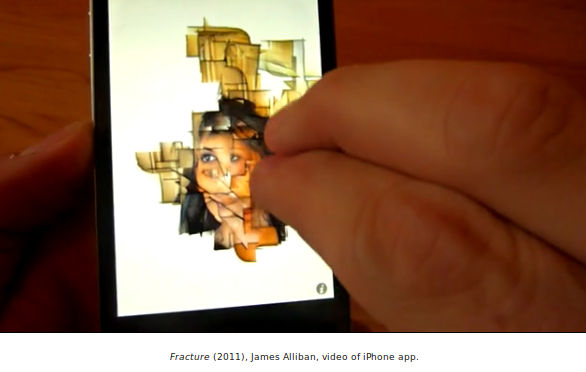
In a Rhizome.org article hawking some terrible iPhone "art" toys, that is to say, interactive apps, Jonah Brucker-Cohen writes re: the above:
Fracture is not only a painting tool, it is a real-time video and still image mixing application that allows users to create portraits like those painted by Pablo Picasso and Georges Braque in the early 1900s through the iPhone and iPad's cameras.
In pre-technological times, you had the artist, a technical magician, the public, who mostly stood in respectful silence absorbing the art, and various church/state middlemen who sponsored it. In the present, you have a technician making some visual magic (in the above case, a surface imitation of a period style), the public, which mostly pokes at their phones like an orangutan might, and the corporate state, which profits from the sales of phones and apps.
The band DEVO might use this as an example of de-evolution.
Even JODI.org has gotten into the act, making a little stick man that does something when you shake your phone.
The people in the demo video look very confused about what's supposed to be happening as they go outside to swing their phones around in the air, blow on them, etc. They resemble an adult kindergarten class, and not in a good way.
Brucker-Cohen's article is an extended product placement for Apple but he feels compelled to make this disclaimer at the end:
Given the incredible power of the handheld device, which is daily relied upon by millions of people while also marketing to them and surveilling them, carving out a space for aesthetic experience through the device seems particularly important.
Not just any handheld device -- these "art" apps are all specifically for Apple phones and pads.
Earlier we quoted Geert Lovink's criticisms of the mindless forced brevity of current social media "updates." Among other things he says "there is a reason why Twitter is limited to 140 characters. There was no technological limitation (not enough bandwidth, computing power, interface etc.)." The reason being, implicitly, to keep us mindlessly consuming.
Twitter didn't start out as an instrument of the devil, however. Seven years ago those little blurts of text were fun and for some, as Jules Laplace reminds us, they actually served a purpose:
Twitter is limited to 140 characters because that's the size of a text message. It was designed for "dumb phone" communication, and came out in 2006, a year before the iPhone. You could text tweets to the number 40404 and have them broadcast out. This might still be the case.
One of the people who built Twitter made something called TXTMob before, which was used to organize with "dumb phones" during the DNC/RNC protests in 2004 - - "it told me where the cops were and where I could rest" - Of course, I'm not arguing that these ideas haven't been perverted by marketing and "analytics" since then.
Facebook, on the other hand, lets you post long comments, but makes you look like a ranting lunatic by cutting them off after 3 lines. It is definitely repressive.